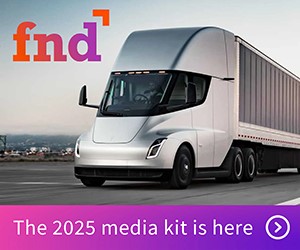The Environmental Case for Fleet Electrification
We have a promising opportunity to reduce the transportation industry’s contribution to climate change dramatically through fleet electrification
The transportation industry has long been associated with climate change. According to the International Energy Agency (IEA), transportation accounted for 27 percent of global greenhouse emissions in 2019–and has accounted for most of the growth in emissions in the previous 10 years. Any progress toward widespread vehicle electrification around the world will make a huge difference in our efforts to counter global warming trends and establish a more sustainable energy system.
Previous efforts to reduce transportation emissions have typically relied on relatively modest approaches like tightening of fuel-efficiency standards, or depended on the actions of well-meaning individuals and businesses who voluntarily pledge to reduce their energy consumption. Clearly, this piecemeal approach will not be sufficient. When addressing transportation decarbonization, which must involve wholesale transformation, we need a more holistic, collaborative approach that includes businesses, utilities, regulators, manufacturers and other stakeholders.
Federal Investments Remain a Priority
It’s clear that the federal government understands the opportunity at hand. The Infrastructure Investment and Jobs Act signed by the President last year provides more than $7 billion to build a nationwide network of 500,000 electric vehicle chargers distributed along the country’s interstate highway system. This investment promises to benefit businesses and consumers alike by providing on-road charging capabilities for both commercial drivers as well as the traveling public.
Overall, these investments, which are intended to help drive EV adoption, are a priority for the Biden Administration, which sees them as an important contribution to achieving carbon emission reduction targets outlined by the Paris Agreement and reinforced at the COP26 Summit in Glasgow. The goal is to make half of all new U.S. passenger vehicle sales EVs by 2030 and 100 percent zero-emission vehicles on U.S. roads by 2050. Just making it to 50 percent of that 2050 goal would reduce carbon emissions by up to 1.5 gigatons per year — roughly equivalent to the CO2 output of a mid-sized, industrialized country.
Now It’s the Private Sector’s Turn
Businesses, however, also have an outsized opportunity to contribute to the achievement of these goals by embracing their own transition to EVs. The electrification of both private and government-operated fleets can provide an opportunity to kickstart our country’s transition away from gasoline- and diesel- powered vehicles. With millions of medium- and heavy-duty vehicles – vans, buses, and trucks – moving people and goods from point A to point B, the sheer scale of fleet electrification can provide an enormous impact, in terms of reducing carbon emissions.
Fortunately, there is a strong business case for transitioning to EVs. According to Consumer Reports, the total cost of ownership of an EV is substantially lower than for gas- and diesel-powered vehicles, when you consider the cost of fuel and maintenance. In fact, fuel savings alone approach nearly $5,000 per vehicle over seven years. The economics of this transition for fleet vehicles is even greater since they spend a much greater percentage of their time on the road. Those savings really start to add up when spread across dozens, hundreds of thousands of vehicles.
However, widespread fleet electrification will require investment – from fleet owners, utilities and governments – to deploy new charging infrastructure and implement upgrades to the grid infrastructure needed to deliver the required charging capacity.
In addition, the implementation of smart grid technology can provide greater insights into load forecasting and planning and inform strategies to optimize fleet-charging. This can help ensure seamless operations while keeping local distribution grids from becoming overloaded. These solutions can be integrated with remote monitoring and asset management solutions that support grid operations, helping utilities proactively monitor energy flows, dynamically shift between generation assets, and ensure energy quality. This is especially critical considering that fleet depots and maintenance facilities tend to be clustered together, which can cause significant congestion in distribution systems in particular geographic areas.
We have a promising opportunity to reduce the transportation industry’s contribution to climate change dramatically through fleet electrification. The federal government has taken important steps to ease the transition and the transportation industry is well-positioned to do its part as well. Now is the time for fleet owners to collaborate with local utilities, policy makers, regulators, and technology suppliers to address the disconnect between charging needs and required grid upgrades.
Byline
Anthony Allard is executive vice president and head of North America at Hitachi Energy.
Category: Electric Vehicles, Engines & Drivetrains, Equipment, Featured, Fuel & Oil, General Update, Green, News, Shop Stuff, Tech Talk, Transit News, Vehicles











